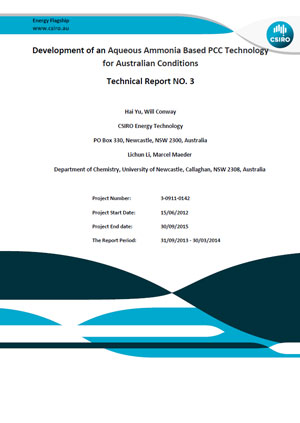Publications
Development of an aqueous ammonia based PCC technology for Australian conditions: technical report no. 3
11th July 2014
Topic(s): Carbon capture use and storage (CCUS), CO2 capture
Post combustion capture of CO2 in power generation using commercial amines results in a significant efficiency loss (25-30%). Using an aqueous ammonia solvent can reduce this loss because it has nearly double the carrying capacity and 40% lower re-generation energy among other benefits. Realising this potential requires promoting the rate of absorption and optimising its performance by establishing fundamental kinetic relationships for the reactions. This report delivers the data for the use of piperazine and proline as promoters. Results to date are equivalent to - though have not yet exceeded the performance of benchmark MEA at the high CO2 loadings required for PCC. This project remains in progress.
Disclaimer
The content within the Global CCS Institute Publications, Reports and Research Library is provided for information purposes only. We make every effort and take reasonable care to keep the content of this section up-to-date and error-free. However, we make no claim as to its accuracy, currency or reliability.
Content and material featured within this section of our website includes reports and research published by third parties. The content and material may include opinions and recommendations of third parties that do not reflect those held by the Global CCS Institute.
